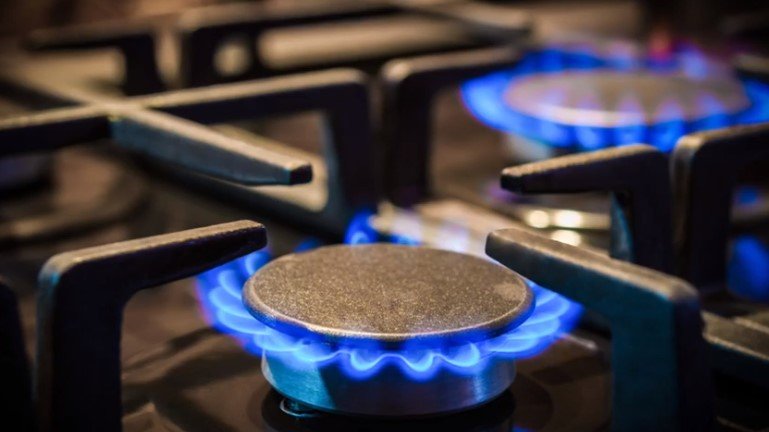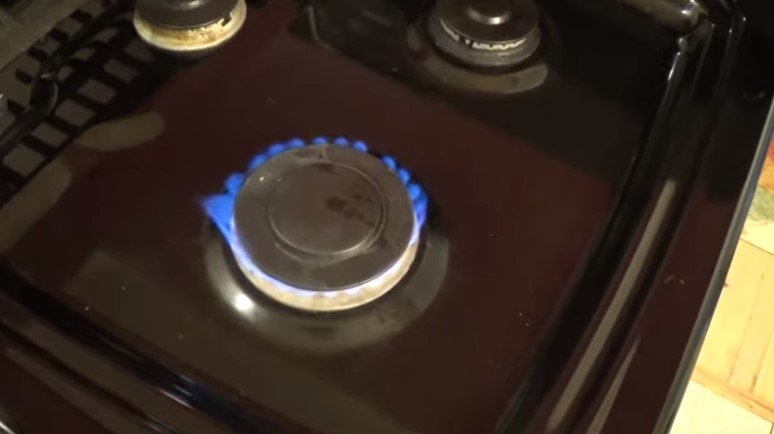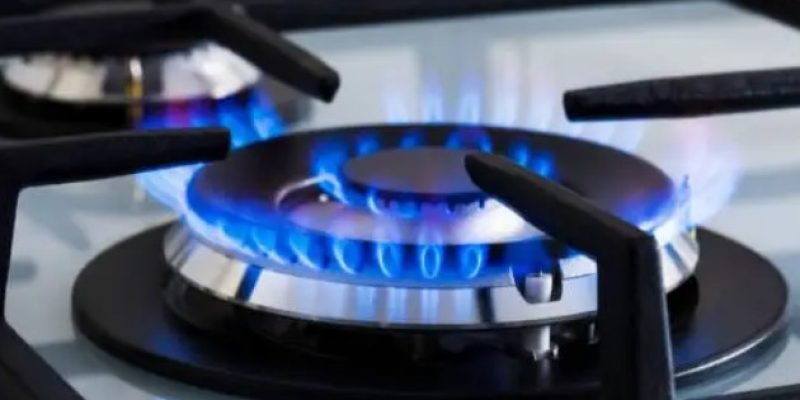Most standard gas ranges have BTU ratings ranging from 5,000 to 20,000 BTUs per burner. For everyday home cooking, that standard 5K to 20K BTU range is usually more than enough heat.
If you’re shopping for a new gas range, you’ve probably seen BTU ratings tossed around ma lot. But what exactly do those BTU numbers mean when it comes to your stove? As a fellow cooking nerd, let me break it down for you.
What Does BTU Stand for?
BTU stands for British Thermal Unit. They are basically a measure of the amount of energy required to raise the temperature of one pound of water by one degree Fahrenheit.
When it comes to your gas stove, the BTU rating tells you how much cooking power each burner cranks out.
More BTUs = more heat. Simple enough, right?
But how many BTUs do you actually need for everyday cooking? And what the heck is the difference between “natural” and “LP” gas BTU ratings anyway? Let’s dig even deeper!
What is the Best BTU for a Gas Cooktop?
Most home cooks do well with a mix of 5K-15K BTU burners, plus one higher output “power” burner of around 18K BTUs. That covers everything from melting butter to boiling big pots of pasta water.
Here are some general BTU guidelines for common cooking tasks:
- Delicate/complicated cooking tasks: 5,000 BTUs (simmering, melting)
- Everyday cooking: 8,000-10,000 BTUs (sautéing, steaming)
- High-heat cooking: 12,000+ BTUs (boiling, searing)
- Large pots/canning: 16,000+ BTUs
- Wok cooking: 18,000+ BTUs
Average Number of BTUs for a Gas Range
Most standard gas ranges have BTU ratings ranging from 5,000 to 20,000 BTUs per burner. Here’s a quick breakdown of typical BTU levels:
| Small burner | 5,000-9,000 BTUs |
| Medium burner | 9,000-12,000 BTUs |
| Large/power burner | 12,000-18,000+ BTUs |
| Oven burner | up to 20,000 BTUs |
Why Do BTUs Matter in a Gas Range?
BTU ratings indicate the intensity and speed of heat each stove burner can produce.
Need to boil a big pot of water, stir-fry on high heat, or char a steak? You’ll want some high-BTU power burners.
Interested in simmering sauces or melting chocolate? Lower BTUs are better for controlling the cooking.
Matching burner BTUs to the type of cooking you’ll be doing most ensures your stove has the right mix of power and performance. No one wants inconsistent heating during their cooking.
Beyond burners, a higher overall BTU rating means the oven and broiler can heat larger quantities of food faster and recover temperature quickly when the door is opened. Perfect for cranking up that Thanksgiving turkey!
What Affects the BTUs Produced by My Gas Stove?

If your gas stove flames seem a little unusual or your food isn’t coming to a boil fast enough, there could be a problem, and the problem is likely to be associated with BTUs?
Here’s what I am talking about:
Is Your Gas Supply Up to Snuff?
First things first – are you sure you’ve got the BTU spec right? Double-check your owner’s manual or the manufacturer’s website, since ranges can vary depending on configurations.
If the BTU rating seems accurate, ask yourself, is your gas supply going? Issues like leaks, blockages, and low line pressure can seriously hamper BTU delivery. The same goes for an outdated or improperly set regulator valve. A technician can check for flow and pressure problems. You may need to replace corroded old gas lines to get BTUs boosted back up.
Dirty Burners
It could just be dirty. Gunky burner ports, dusty igniters, greasy caps, and grates – all can hinder smooth BTU flow. Give the stove a good cleaning and clear out those burner holes. Shining things up helps your stove shine its BTU performance.
Check That Alignment
Are your burners aligned properly? The burner heads need to sit flat and centered on the valves for gas to flow optimally. Check your owner’s manual for proper alignment. Getting things adjusted just right is key.
Flame Intensity
How are your flames looking? Weak, yellowy, or uneven flames can mean restricted gas flow. The ideal is steady blue flames without excessive noise. Adjust air mixers per instructions to improve combustion.
Cookware
Is your cookware up to par? Warped pans, small diameters, or poor conducting metals fail to leverage your stove’s full BTU. Use flat-bottomed pans sized to burners and suitable for gas stovetops.
Ventilation
Ventilation matters. If smoke and vapors aren’t adequately vented, combustion suffers. Proper hoods or circulating air help your stove breathe easily.
How Do I Increase BTU on My Stove?
If your current gas range isn’t packing enough BTU power, you have a couple of options:
- Replace the burners: Many manufacturers sell higher-BTU burner heads that are compatible with specific models. Easy to swap out!
- Upgrade the regulator: A regulator adjustment can increase BTU flow to the cooktop. If you have some background experience, you can upgrade or reset the gas regulator, but if it is not it requires professional installation.
- Get a commercial stove: Pro-style ranges boast up to 25,000 BTUs per burner.
- Replace the whole range: Sometimes, you may need to buy a new gas range with higher BTU outputs to get that extra power boost.
Why is My Gas Stove Not Getting Hot Enough?

If your gas burners aren’t reaching the temps you expect, low BTU flow could be the issue. But there are other possible culprits too:
- Clogged burner ports or dirty igniters
- Gas line issues like leaks, blockages or low pressure
- Incorrect cookware (warped pan bottoms, too large/small for burner)
- Bad regulator or burner control valves
- Obstructed ventilation
How Do I Make My Gas Stove Flame Better?
Nice even flames without excessive noise or erratic burning are perfect for cooking. For improved stove performance, make sure your gas flames are blue and steady, not weak or yellow-tinged. Here are some tips to make the gas stove flame hotter and better:
- Clean clogged burner ports with a straightened paperclip
- Clear debris from igniters and valves
- Replace old gas lines if corroded
- Ensure cookware is flat on burners
- Keep burner grates and caps clean
- Have professionally checked for leaks annually
- Consult your owner’s manual for maintenance tips
Do Electric Ranges Have BTUs?
Gas cooktops are different from electric cooktops. While most relevant for gas stoves, you may see BTUs referenced for electric ranges too. Rather than measure literal gas BTU output, electric ranges list “cooking power” in equivalent BTUs. This indicates how much cooking ability electric burners and ovens have compared to gas.
For example, an induction burner with 5,000 BTUs means it can boil water about as quickly as a 5,000 BTU gas burner. This cooking power equivalence helps you gauge electric stove performance. But lower BTU equivalents can be deceptive – induction elements may heat more efficiently in real-world use.
The Bottom Line
While those BTU values aren’t perhaps the most glamorous stove spec, understanding how they impact heating is super helpful in picking the right gas range. Whether you need high-powered boiling or complicated simmering, thinking in terms of BTUs can ensure your new cooker is just the right fit.
